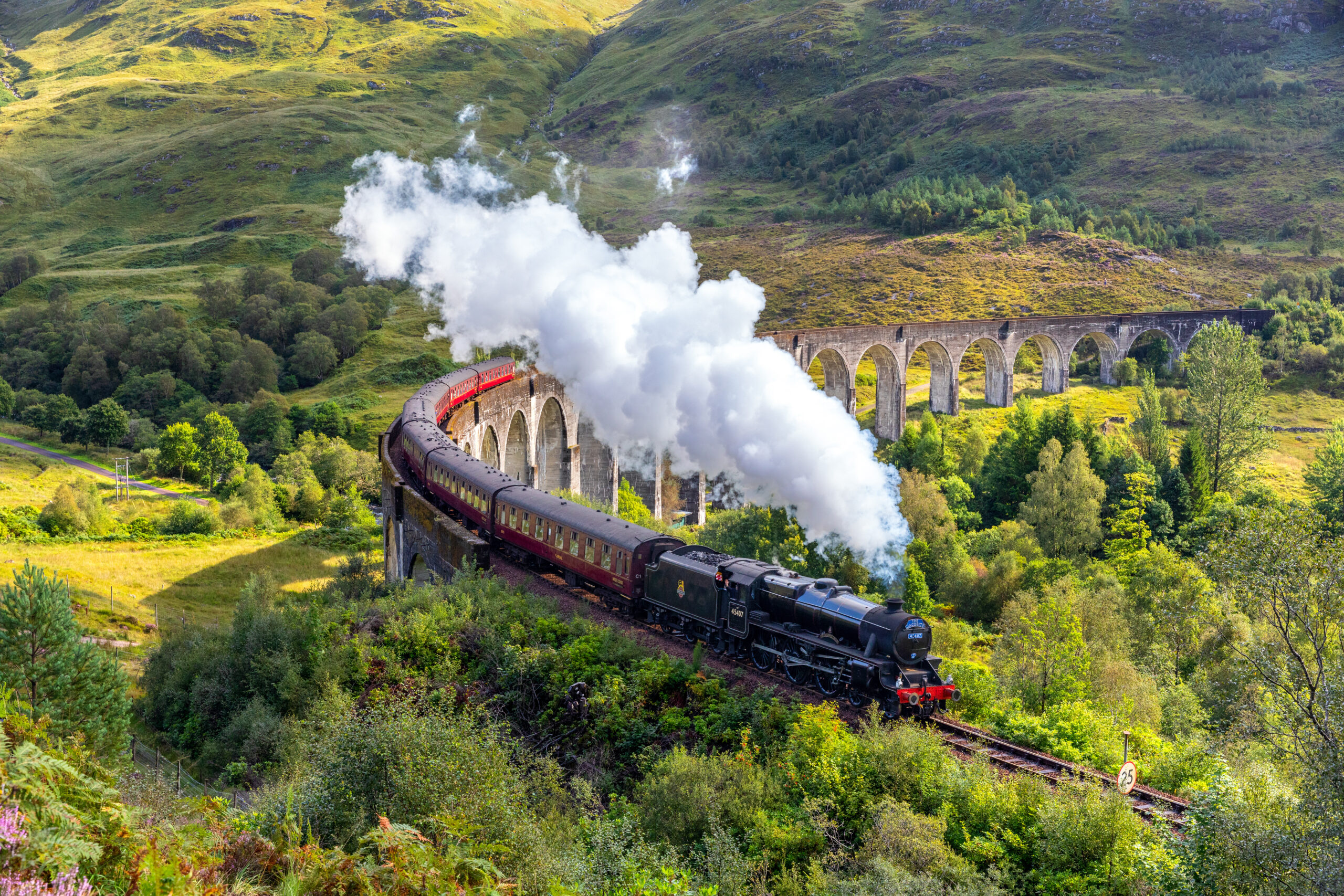Scotland is home to Britain’s most spectacular scenery, which includes the highest mountain, Ben Nevis, the deepest loch, Loch Morar, the tallest trees and the most remote areas of wilderness.
Edinburgh as a capital city has everything a capital city should have – a castle, a royal palace, national art collections, great museums, excellent shopping and fine architecture. Glasgow is known for its vibrant cultural life, first class shopping, great museums and galleries. Charles Rennie Macintosh was an architectural driving force and his Glasgow School of Art should not be forgotten. Glasgow has magnificent parks and gardens, including the Botanic Gardens and Pollock Country Park, where the Burrell Collection can be found.
St Andrews has been a place of learning and the ‘home of golf’ since 1412; the Royal Old Golf Club was founded in 1745 and is the most influential in the world for the sport.
The border region of lush pastureland, hills and woodland inspired Robbie Burns to write many of his poems.The Trossachs also inspired many writers and poets such as Coleridge, Wordsworth and Ruskin with its beautiful landscape of lochs and hills.
In the Cairngorms you will find Britain’s highest mountains with six peaks over 1220 meters high.At the heart of the Cairngorms is Aviemore, the starting point for many mountain activities. In summer, the chairlift makes it easier to climb the mountains!
The islands of Scotland are all unique; Arran on the Ayrshire coast is often referred to as the ‘miniature Scotland’. The Orkney Islands, 70 islands off the north coast, beautiful beaches, historical heritage, culture and wonderful wildlife. Further north, 100 miles off the coast are the Shetland Islands, a blend of Scandinavian and Scottish culture. Between Orkney and Shetland lies the Fair Isle, famous for its knitwear and a great place for birdwatching. Off the northwest coast are the Outer Hebrides with their powder-white beaches, dark moorland and craggy cliffs. Skye is Scotland’s second largest island, one of the most romantic and beautiful and deeply rooted in history.
Eilean Donan
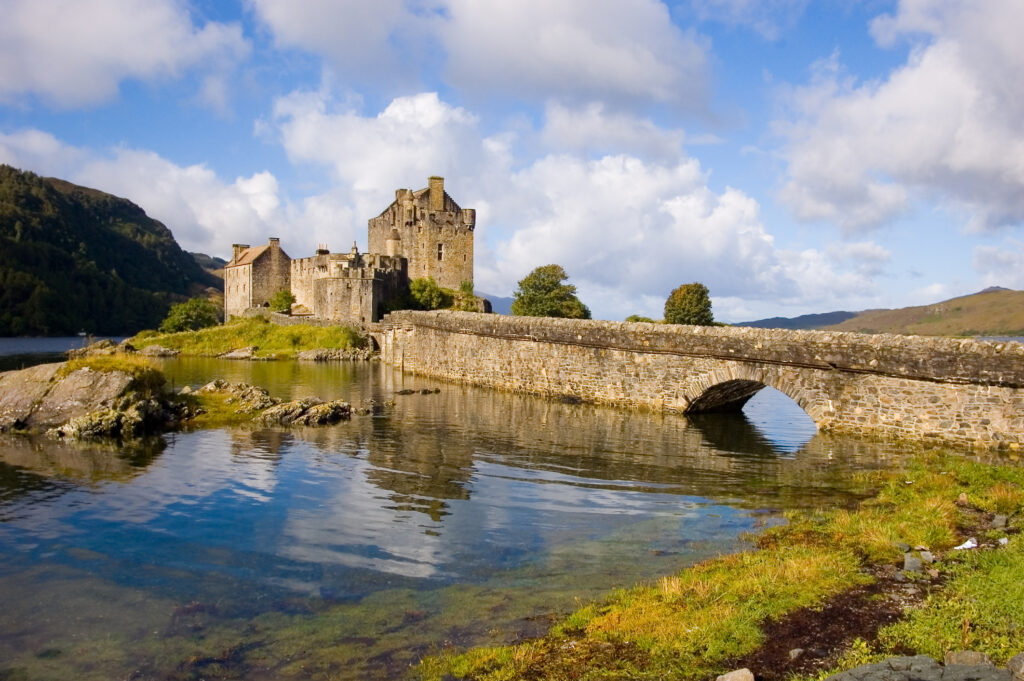
Eilean Donan Castle sits enthroned on a small island that is completely submerged by the sea at high tide. The island can only be reached via a long and beautiful stone bridge. This bridge and the gloomy walls behind it have made Eilean Donan famous, as it has repeatedly been used as a film set. Whether for the film “Highlander” or other cinema hits, such as James Bond’s “The world is not enough”.
Eilean Donan is a first-class Scottish tourist attraction, but one that is well worth a visit. Especially as the guided tours are skillfully staged. Dressed in a kilt, with a Scottish twang and a lot of passion, the guides tell the story of the castle, lead you through the lavish rooms and the secret chamber in the great hall. Very exciting!
The location is both picturesque and strategic. Eilean Donan lies at the meeting point of three gulfs. From the Isle of Skye in the west comes Loch Alsh, which then bends to the south-east and from then on is called Loch Duich. Loch Duich stretches deep into the interior, as far as the Shiel Bridge. Finally, the narrow Loch Long runs above the castle.
If you wanted to sail through these lochs to get inland, you first had to pass Eilean Donan Castle. This is exactly what made the castle so valuable.
Aberdeen
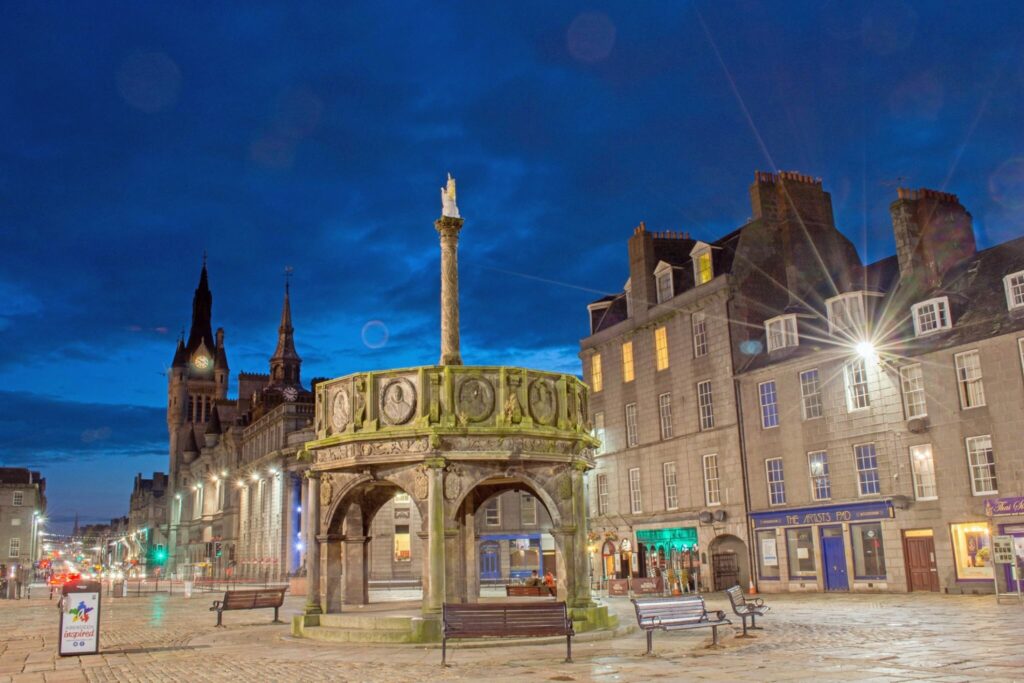
Aberdeen is the third largest city in Scotland and is located on the east coast. The beautiful harbor city is particularly famous for its many sparkling granite buildings, which is why Aberdeen has been nicknamed the “Silver City”. The combination of the listed old town of Old Aberdeen and the refreshingly modern street art also attracts many visitors to this unassuming city. Aberdeen was founded in the Middle Ages and certain buildings, such as St. Machar’s Cathedral, date back to this early period. Today, the granite city is an important university town and also an extremely interesting place for history enthusiasts.
Marischal College was built in 1593 as a Protestant counterpart to the Catholic King’s College and is now the second largest granite building in the world.Within the walls you will find a museum, the main theme of which is Scottish history.
Walking through this old town, you feel as if you have been transported back to the Middle Ages. The buildings from this period bring the ancient flair to life and also provide an exciting backdrop and the perfect subject for a few photos. Due to the universities, this part of Aberdeen has become a meeting place for students and provides the necessary atmosphere with plenty of bars and pubs.
The ruins of Dunnottar Castle are located just outside Aberdeen on a cliff on the coast, creating a picturesque scene, especially at sunset and sunrise. The castle, which was built around the 16th century, was often the main focus of various disputes during this period and has been destroyed for this reason on one occasion or another.
Shetland
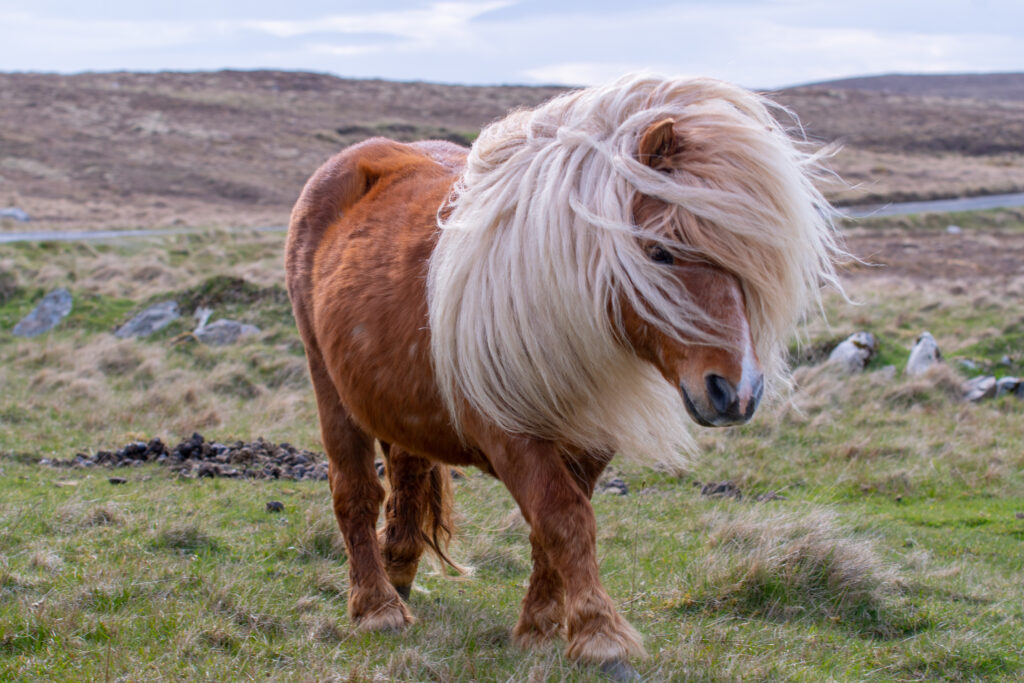
The archipelago has over 100 islands, 16 of which are inhabited. Most of the 20,000 islanders live on the main island of Mainland. Their sparse population is countered by a strong community and the harsh climate by warm woolen goods – knitted by hand. Anyone who visits Shetland will soon realize that the elements set the pace here.
The center of the island presents itself to all who approach Shetland from the water. The ferry glides through the bay of Lerwick, where gray, stone houses rise up the hills. As quiet and tranquil as the little town may seem, the ferry and fishing port is bustling with activity. Large halls of fish trading companies line the jetties. Alongside the oil industry, fishing is Shetland’s most important branch of trade.
The locals like to call their island “The Old Rock”. Some of the rocks in the north of the island are 2.8 billion years old.
Shetland, shaped by tectonic shifts, ice ages, rain, wind and waves, has been a designated Unesco Global Geopark since 2015.
Geodiversity reigns here.Different types of rock fit together like a large jigsaw puzzle:In addition to gneiss, the archipelago is formed from granite and limestone, slate and volcanic rock.
The latter can be admired on the cliffs of Eshaness, where powerful Atlantic waves break unchecked on the west coast and seem to smash the rock to pieces.
The elongated main island of Mainland measures 85 kilometers from north to south.It is surrounded by countless boulders, tiny islets and 15 other inhabited islands, each a microcosm in itself.Some, such as Muckle Roe, Trondra or the neighboring islands of East and West Burra, are so close that they are connected to the mainland by bridges.
Ben Nevis
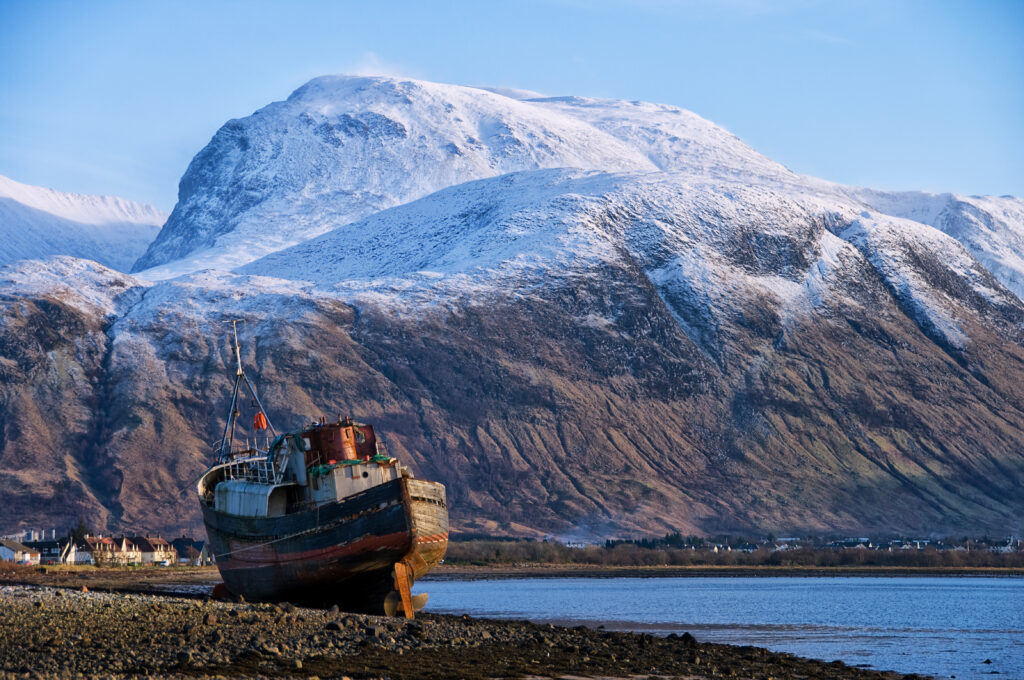
Ben Nevis is the highest mountain in Great Britain at a height of almost 1,345m. This may not seem very high to many, but the climb should not be underestimated. The ascent to the summit begins not far from the West Highland town of Fort William at an altitude of around 100m above sea level. The climb is long and rocky, and the weather conditions are usually very rough. But it’s worth it: even during the ascent, you are treated to views of the beautiful landscapes of the West Highlands.
On most days of the year, you can only see the summit when you climb the mountain itself. Once at the top, you will discover the ruins of an observatory built in 1893. Meteorological data was collected here until 1904, which still plays an important role in understanding the weather in the West Highlands today. The ruins also offer hikers shelter from the wind and weather. Anyone interested in geology will also recognize evidence of a volcanic explosion. Light-colored granite can be seen around the summit. Ben Nevis was once an active volcano, but collapsed when the great explosion took place.
Ben Nevis is not only known as the largest mountain in the British Isles, but also for the steep, 700m high cliffs of the north face. These offer adventurers an alternative ascent to Ben Nevis. They are particularly popular with climbers and offer various levels of difficulty.
The Isle of Arran
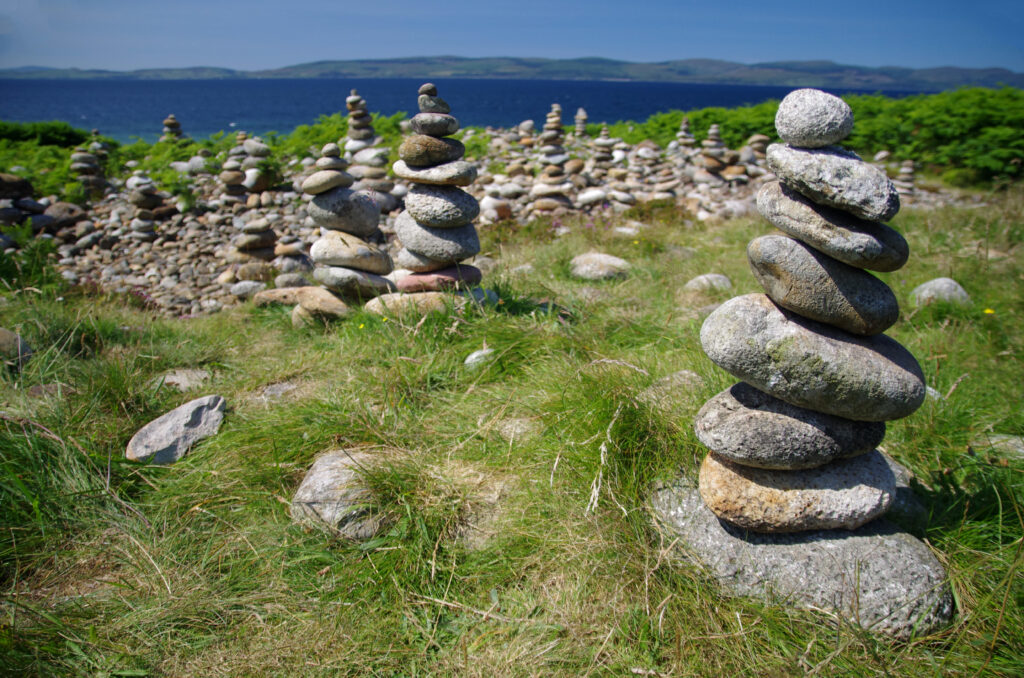
The Isle of Arran is located in the Firth of Clyde not far from Glasgow. With a length of around 32 kilometers and a width of 16 kilometers, it invites visitors to get to know its untouched nature. The landscape of the island, which is often referred to as Scotland in miniature, is particularly varied: the south attracts visitors with its grasslands and hills, while the north boasts rugged mountains. The highlight of the Isle of Arran is the Highland Fault, which virtually divides the island in two and creates a geological border. The north of Arran belongs to the Highlands, while the south is part of the Lowlands. The so-called “String Road” also winds its way through the extensive valley – the mountain road stretches from Brodick in the east to Blackwaterfoot in the west.
The Isle of Arran has the sixth highest population of all the Scottish islands. The population is concentrated on the east coast. Nowadays, the island lives mainly from tourism. However, the food industry also plays an important role here. Whisky production is particularly important here: for example, you will find the famous Arran Distillery, which has been operating in Lochranza since 1995. Equally famous is the Arran Brewery, which produces various beers.
The history of the Isle of Arran goes back to the times of hunter-gatherers more than 7,000 years ago. Their traces can still be found today in the stone tombs and circles.
Outer Hebrides
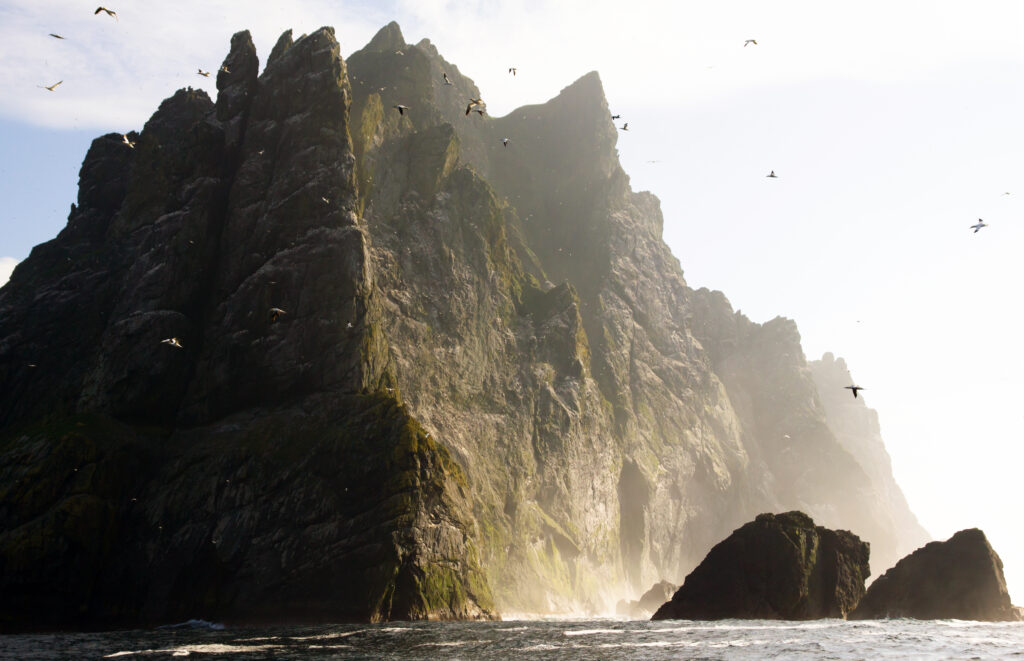
The island chain of the Outer Hebrides far out in the Atlantic, where the sea is rough to stormy and the elemental force of nature determines life, consists of the oldest rock in the world and seems to act as a protective barrier against the elements on Scotland’s west coast. Small planes from Glasgow and Edinburgh land in the larger villages on the islands, and ferries from the mainland also dock here.
On the sparsely populated Outer Hebrides, the airport sometimes consists of little more than a gravel runway.
Of Celtic origin, the islands were overrun by the Vikings in the 9th century before being returned to Scotland in the Treaty of Perth in 1266.
Gaelic culture is still alive today, and although English is now spoken, the beautiful onomatopoeic Gaelic language is used by the majority of islanders in everyday life. Sunday is strictly observed, stores remain closed and to this day no ships or ferries call at the Isle of Lewis on the Sabbath. While the religion of the northern islands is Presbyterian, almost 90% of the population in the south are Catholics.
They are all hospitable, the inhabitants of the almost treeless Hebridean islands, and usually don’t even lock their doors. The clocks tick differently here, time slows down – that’s what makes the Outer Hebrides so charming. Incidentally, the machair dune meadows, which look like colorful, flower-patterned carpets in front of the turquoise-blue beaches in summer, are a special phenomenon.
Cairngorms National Park
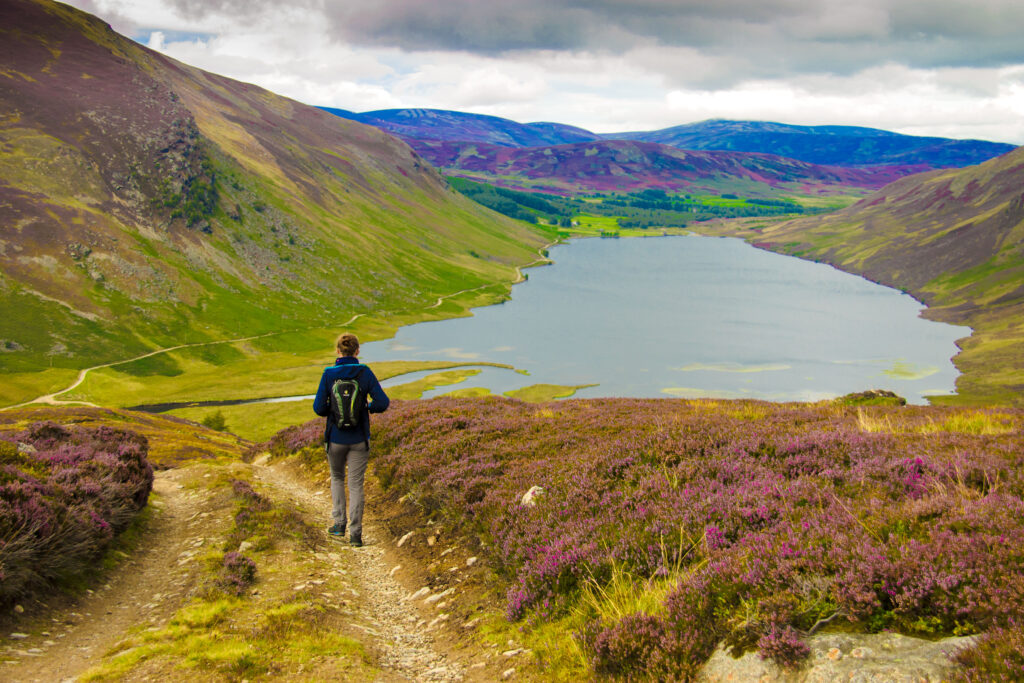
Scotland’s second national park, the Cairngorms National Park, was officially opened on September 1, 2003. Covering an area of over 3,800 km², it is also the largest and most northerly national park in the UK. It stretches from Ballater in Aberdeenshire in the east to Laggan and Dalwhinnie in the west and from Grantown-on-Spey in the north down to the Angus Glens. Translated from Gaelic, “Cairn Gorms” means the ‘blue hills’, which sounds rather cute given that there are 49 Munros here alone, four of which are over 1,300 meters high.
The impressive mountain landscape shapes and dominates the life and people, the culture and the natural character of the region. Nature is by far in the foreground, consisting of ancient forests, arctic-like mountain peaks, mystical lakes, meandering rivers and streams and moorland. It is home to rare flora and fauna, a quarter of which are endangered species in the UK.
Castles and palaces, including the summer residence of the British royal family, Balmoral Castle, a multitude of whisky distilleries, typical Highland traditions such as the Braemar Highland Games and Ceillidhs with music and dance invite visitors to linger, marvel and join in throughout the year.
Fort William
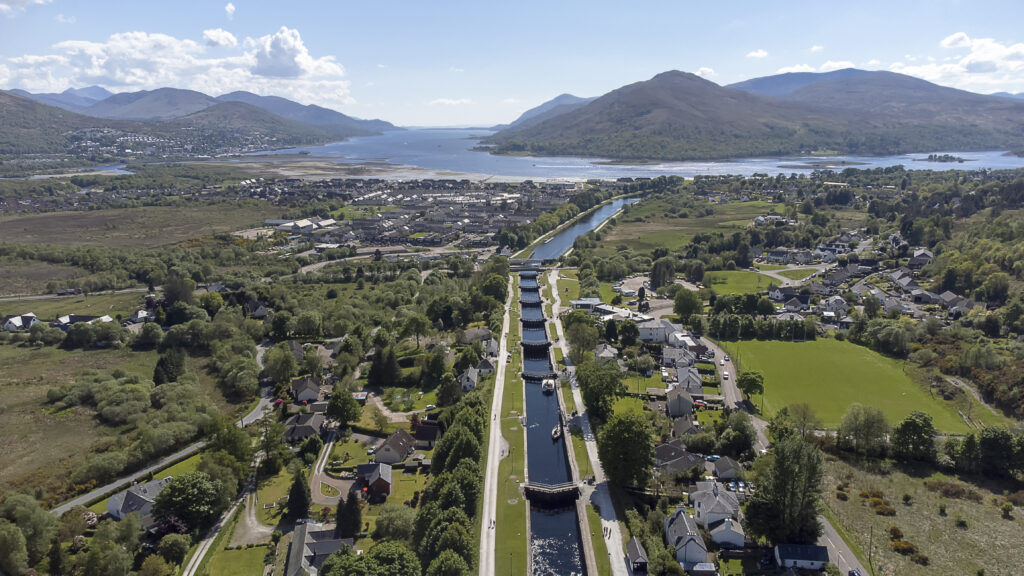
“An Gearasdan”, ‘the garrison’, is the Gaelic name for Fort William. All the names here point to a military past. The place originally began as a small fishing village at the mouth of the River Lochy, which flows here from the Great Glen.
But it did not remain peaceful: Clan Comyn built a castle here in the 13th century, Inverlochy Castle. There were at least two major battles here in the centuries that followed. And later, the British government wanted to control the strategically important entrance to the Great Glen and built a fort.
Today, nothing remains of the former fortification.
However, Fort William has retained its strategic location: as a hub and gateway to the West Highlands.Outdoor enthusiasts in particular hike and bike from here into the massif around Scotland’s highest mountain, Ben Nevis. The famous West Highland Way also ends here.
The pedestrian zone and shopping street High Street forms the actual town center.Here you will find stores, pubs and museums.
And then, of course, the “Harry Potter Train” departs from Fort William – or The Jacobite Steam Train, as it is correctly called. This is why hundreds of tourists flock to the local station time and time again. It runs through the magical landscape along the Road to the Isles, over the Glenfinnan Viaduct (the arched bridge in the film) past the beaches of Morar to Mallaig. The Jacobite is based in Fort William and departs from here twice a day during the season.
St. Andrews
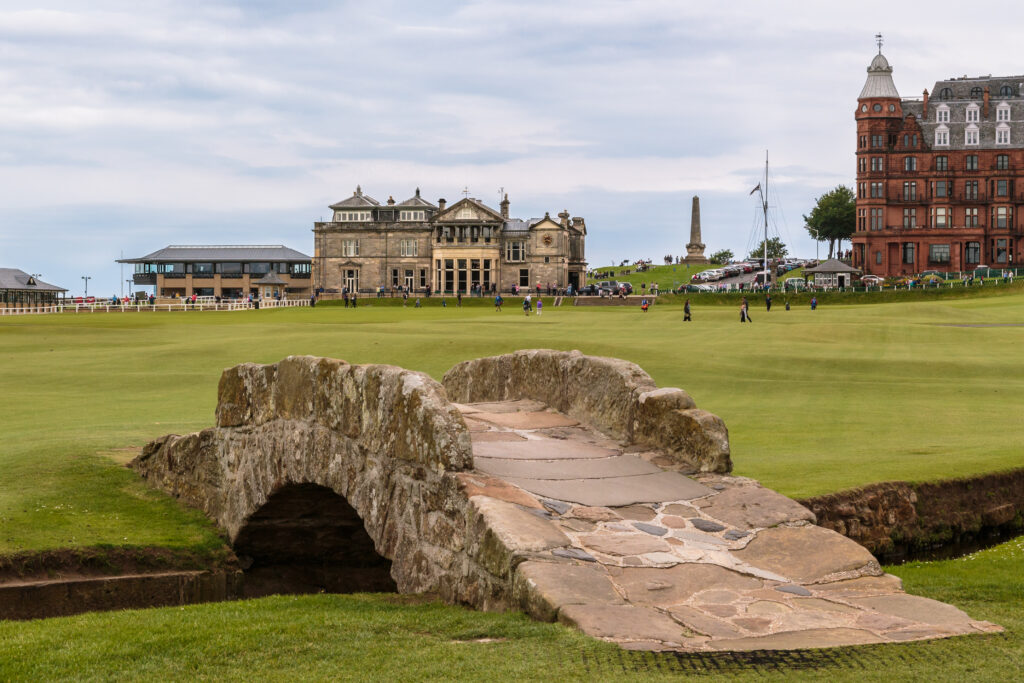
The small coastal town of St. Andrews is an old town full of young people. This gives St. Andrews an unmistakable charm
The town of 17,000 inhabitants on Scotland’s east coast offers nature, history – and of course golf. In other words: if you want to get to know Scotland, then a single visit to St. Andrews will take you a long way towards achieving this goal.
The university dates back to 1413, making it the first university to be founded in Scotland. The students still characterize the townscape today. Young people can be seen everywhere and there are comparatively many pubs and restaurants for a town of this size.
In addition, golf seems to be played on every open lawn in St. Andrews. There are a total of eleven golf courses in the town, some of which are known to golfers worldwide, such as the “Old Course”. It is therefore not surprising that St. Andrews is known as the “home of golf”.
Most of the sights are within walking distance of the city center.
Particularly attractive are the white sandy beaches, which are only a few minutes away from the town center. There are three beaches in St. Andrews and the smallest is the best – Castle Sands.It is very central and yet not overcrowded.
St. Andrews became a bishop’s see around 908.Construction of the cathedral began around 1160 and took over a hundred years.The builders chose a dramatic location for their church: The cathedral sits high above the sea on a cliff framed by white sandy beaches.Throughout the Middle Ages, St. Andrew’s Cathedral was one of the most important pilgrimage sites in Europe.
Inverness
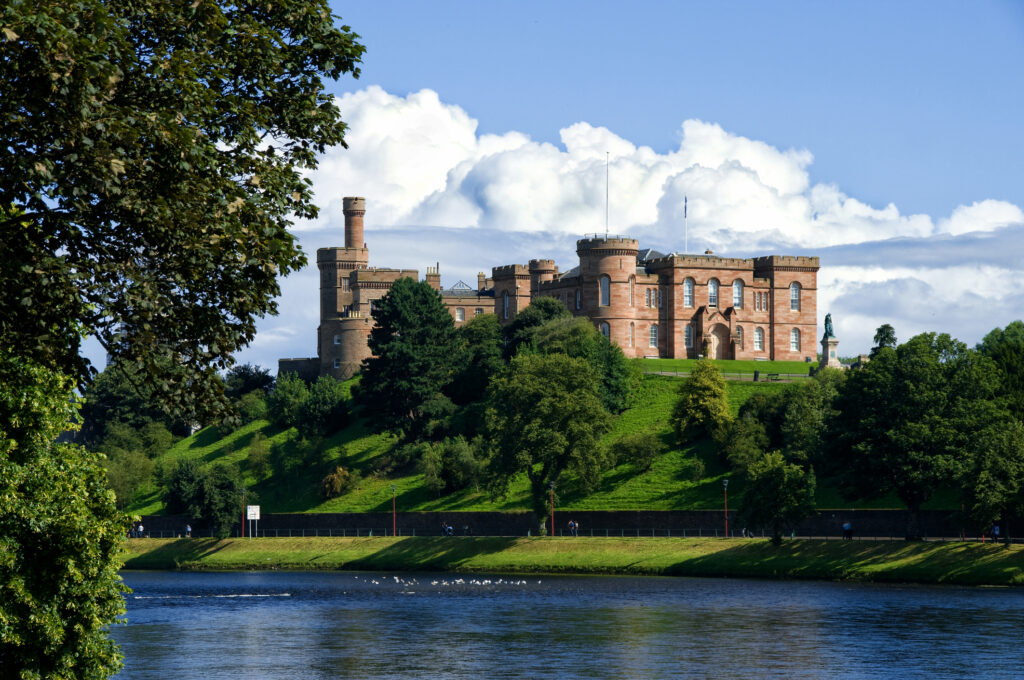
The capital of the Highlands is a tourist town that benefits from its location on Loch Ness. An important port and shipbuilding center in the Middle Ages and prosperous due to the lucrative export of timber, leather and salmon, Inverness grew to become the administrative center of the Highlands and Islands after the Jacobite Rebellions. Even today, Inverness, the most northerly city in Britain, is the hub of the Northwest Highlands, and many people and crofters from the surrounding areas come to the city mainly to shop.
The Millennium City at the mouth of the River Ness is now one of the fastest growing cities in Western Utopia. A quarter of Highland residents live in the Invernesshire area surrounding the city. As Inverness has the highest quality of life of any Scottish city, it is not surprising that its residents are regularly ranked among the happiest in surveys.
The name Inverness is derived from the Gaelic language and means “mouth of the River Ness”. Until the 19th century, the majority of the inhabitants spoke Gaelic as their mother tongue. Today, around 4.8% of people still speak Gaelic, making Inverness one of the centers of the Gaelic Renaissance.
The city is the center of folk and bagpipe music and is lively with stores, restaurants and hotels.
Bagpipers from all over the world meet here every September for the Northern Meeting.
Orkney
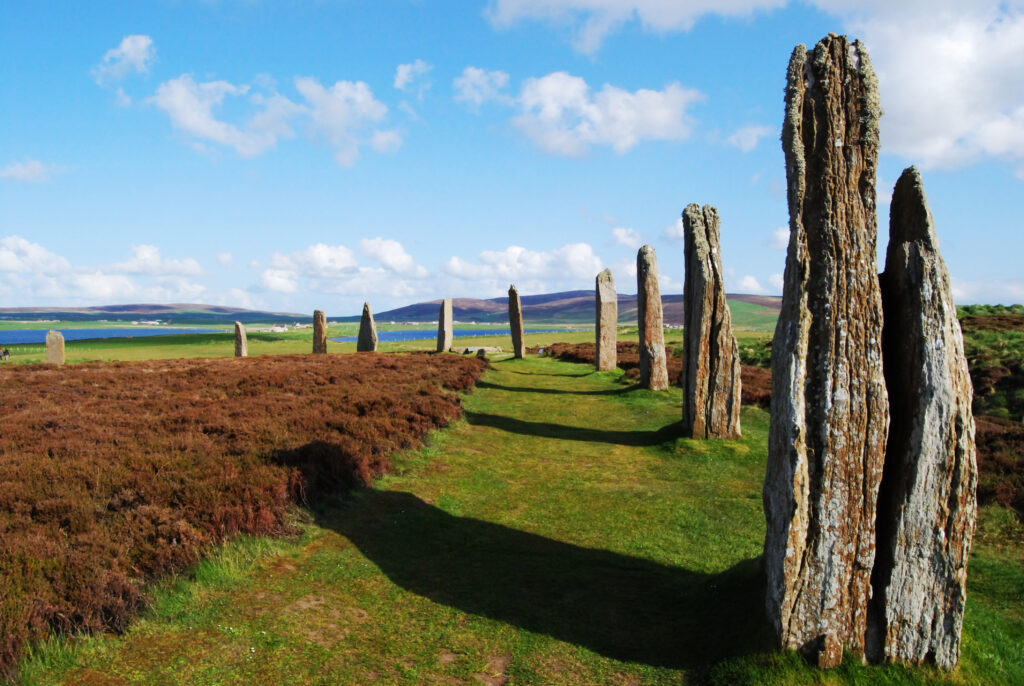
Water and stone. The sometimes wild, sometimes gentle interplay of these two elements has shaped – and continues to shape – Orkney, the archipelago directly above the northern tip of the Scottish mainland. This is where the azure waters of the North Sea and the Atlantic meet, artfully carving islands large and small out of the soft red sandstone. Above them lies a carpet of lush green.
The Orkney archipelago has rather flat islands, with only Hoy offering some serious hills. Otherwise, fertile plains of heather and grass stretch across the islands, which often slope steeply towards the sea, creating rugged beauties such as the cliffs of Yesnaby.
However, Orkney is famous for its historical heritage. With the Ring of Brodgar and the Standing Stones of Stennes, as well as the Stone Age village of Skara Brae, the North Isles offer significant and magnificent evidence of the architecture of Neolithic peoples. As the Neolithic Heart of Orkney, these finds are now part of the Unesco World Heritage Site.
No less impressive are the legacies of the Vikings and later the Norwegians. They built palaces and cathedrals here.
The Orkneys are therefore well worth an extended visit, taking you back thousands of years in an amazing landscape.
Loch Lomond
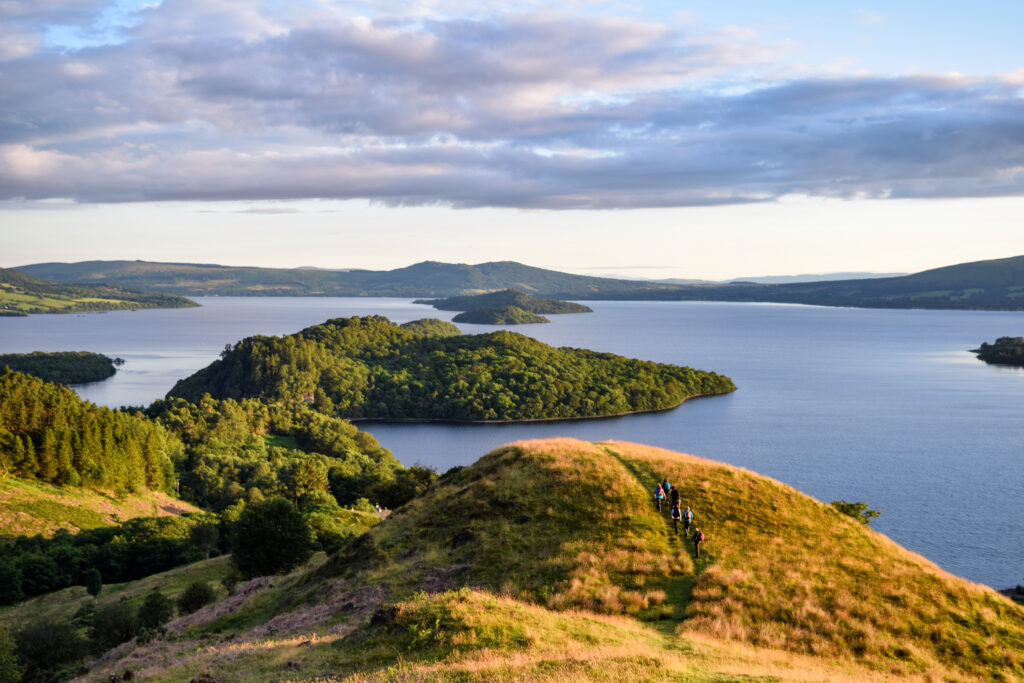
There is an almost perfect moment to catch your first glimpse of Loch Lomond: On a windless day, under a clear sky, just after sunrise. That moment when the first morning light shifts over the surrounding black outlines of the Trossachs mountains and the sun colors the sky in the most diverse shades, which in turn is reflected flawlessly in the mirror-smooth water of the lake. No waves cloud the dark water as it laps leisurely against the shore.
If you stand still and let this moment sink in, you can catch a glimpse of the moving beauty of Scotland. And then you will know why Loch Lomond is considered by many to be the most beautiful loch in Scotland.
With an area of 71 km², it is also the largest loch in the country. It winds and meanders over a length of 39 kilometers between the foothills of the surrounding mountains, which sometimes extend far into the water. In between – depending on the water level – 30 to 60 islands of different sizes rise out of the lake. In the past, the largest of these served as welcome hiding places and refuges for the legendary whisky smugglers.
Loch Lomond is located in the Trossachs National Park, which many travelers coming from the south often (wrongly) regard as the first foothills of the Highlands. For Glaswegians, as the inhabitants of Glasgow are known, the national park is an ideal recreational area.
Stirling
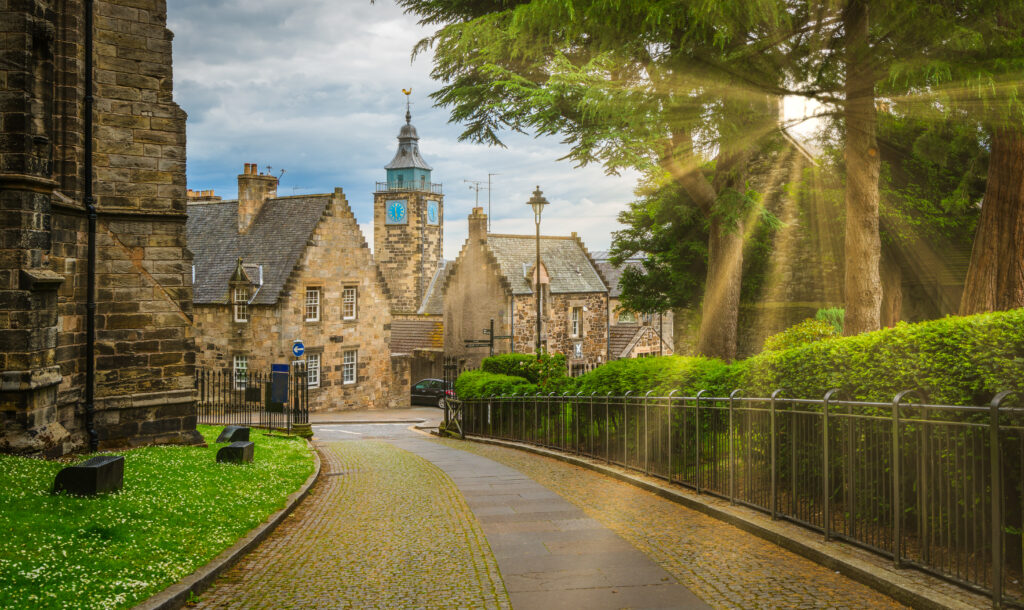
Stirling is anything but a big city. Rather, when you pass through it, the town looks like a loose collection of houses and streets nestled between the hills below the monumental castle. But it is this castle that reveals to the casual observer that Stirling was once of great importance. What’s more, it was once a vibrant, important center of the young Scotland.
The similarities to Edinburgh, the capital, are unmistakable.The Scots even go so far as to say that Stirling is a miniature version of Edinburgh.All in all, smaller, more compact, cozier – but no less steeped in history.It is said that the history of Scotland rests on two rocks, the volcanic rocks on which Edinburgh Castle and Stirling Castle are enthroned. You don’t have to be a military strategist to realize that these positions were ideal for building fortifications on. In Stirling in particular, where there is nothing but rolling hills for miles around, the position of the castle is second to none.
In the battle against the English occupation, Stirling became a symbol of Scotland’s refusal to recognize the supremacy of the English. Twice the Scots fought for their independence near Stirling – and twice they inflicted devastating defeats on the English. William Wallace, today best known for the film Braveheart by and with Mel Gibson, made his first appearance here in 1297.
Glasgow

Glasgow is Scotland’s most populous city and one of the country’s most important economic centers. The city has always stood in the shadow of Edinburgh, where Scotland’s cultural and political life took place. It was not until the beginning of the 18th century, with the opening of the American colonies, that Glasgow began to flourish.
On the one hand, there was a tremendous display of splendor – the Victorian era demonstrated its prosperity above all with glamorous architectural buildings – and on the other hand, there was mass misery. After the Second World War, the city fell into a long-lasting structural crisis and acquired the reputation of a run-down, ugly industrial city.
It was not until the mid-80s of the last century that steps were taken that led to a comprehensive urban redevelopment and restored Glasgow to its former glory.
Almost 3000 buildings were listed and restored accordingly.
There were also cultural developments in the former industrial metropolis: the Burrell Collection of art was opened in Pollock Park and Glasgow was voted European Capital of Culture in 1990. Numerous museums and theaters opened their doors, including the Glasgow Royal Concert Hall, and in 1999 the city was awarded the title “City of Architecture and Design”.Due to these “ups and downs”, the inhabitants of Glasgow are cosmopolitan, warm and always straightforward.
Of course, the city’s many Victorian monuments are well worth seeing, including George Square with the City Chambers, Merchants House (home to the oldest chamber of commerce in the UK), the Bank of Scotland and the main post office.
Glen Coe
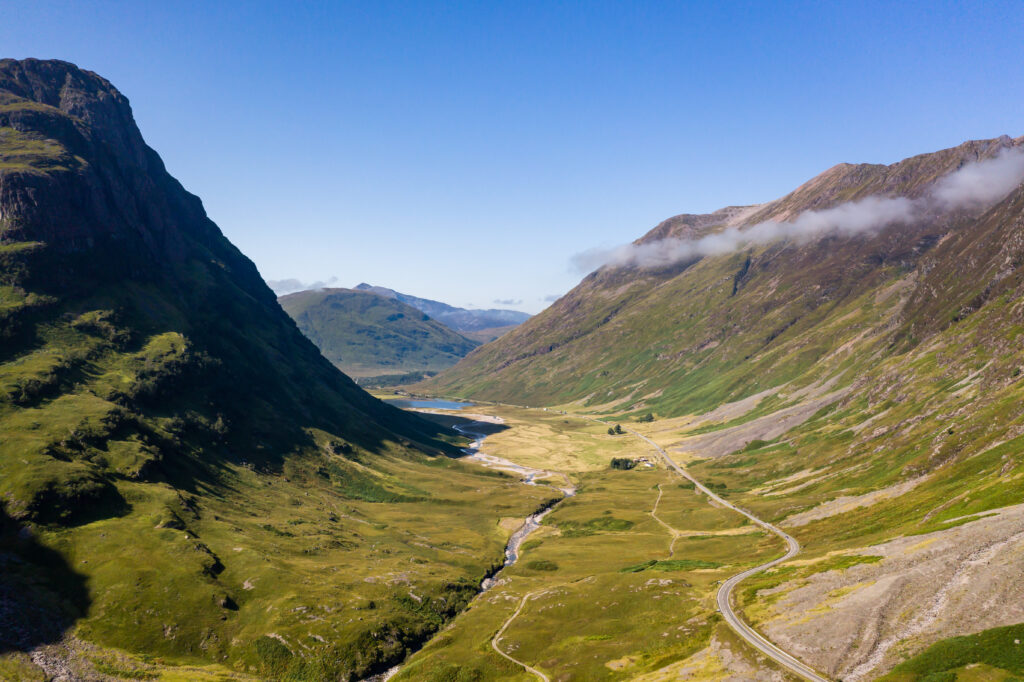
The Vale of Glencoe is not only one of the most beautiful places in Scotland, but also one of the most tragic. In the history of Scotland, the name “Glencoe” is inevitably associated with the gruesome massacre that disturbed the peace of the valley forever on a cold February night in 1692.
Glencoe is a small village in the north-west of the Glen Coe (Gleann Comhann), where the River Coe flows into Loch Leven. The valley presents itself almost as a gateway to the real Highlands, as you approach Glen Coe from the south, crossing a plateau until the rugged mountains rise up on either side of the A82, making the eyes of walkers, climbers and winter sports enthusiasts light up.
Glen Coe is an outdoor paradise and as you drive through the valley – especially on a sunny day when the greenery on the lower slopes glows with promise – you can completely forget the tragic events that took place in Glencoe in 1692, when one clan betrayed another and a total of 78 men, women and children lost their lives. What shocks Scots to this day about this act is the breach of trust and the abuse of the right of hospitality, which is still considered sacred in Scotland today. The right of hospitality is an elementary component of clan culture and is granted even to the worst enemy.
Isle of Skye
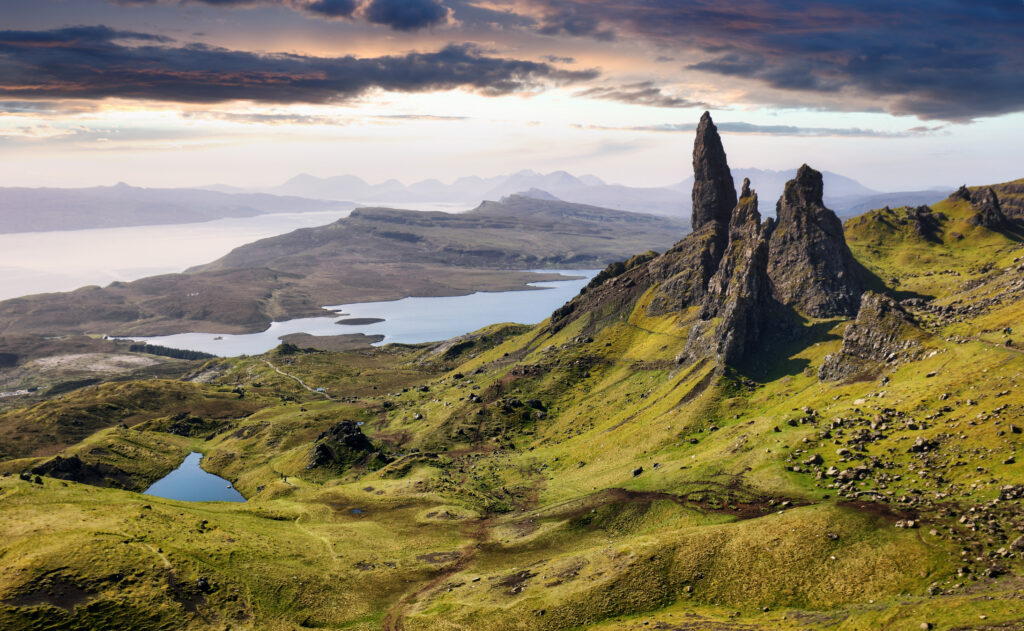
Like no other vacation region, Skye combines all the advantages of the Highlands: rolling hills, bizarre mountain ranges, bays, beaches, lochs, sea – everything is beautiful and plentiful. There is also an extremely high density of places of interest: There are several castles, two whisky distilleries, a historic village, a famous rock needle, beautiful and varied mountain landscapes, idyllic harbor towns and much much more.
The Isle of Skye is part of the Inner Hebrides of Scotland and is its largest island. It lies off the west coast at about the same level as the Highlands capital of Inverness.
The Isle of Skye has become a real tourist magnet since it was connected to the rest of Scotland by a car bridge. No wonder, as it is not short of cultural and scenic highlights.Sometimes there are quite a few visitors in one place. But don’t worry: the island is big – bigger than many people think. Mainly because it is divided into several peninsulas and therefore has a very long coastline.
We don’t know of any other place where you can see so many different landscapes. In the south, the black and red Cuilins rise sharply and fearsomely into the sky – the highest of them reaches almost a thousand meters. This results in beautiful combinations of lochs and mountains, such as Loch Coruisk.
In the north, on the other hand, Waternish and Trotternish are artfully carved mountains with soft and sometimes bizarre shapes: The MacLeods Tables with their flattened peaks, the humpbacked Quiraing or the rock needle Old Man of Storr.
Dunrobin Castle
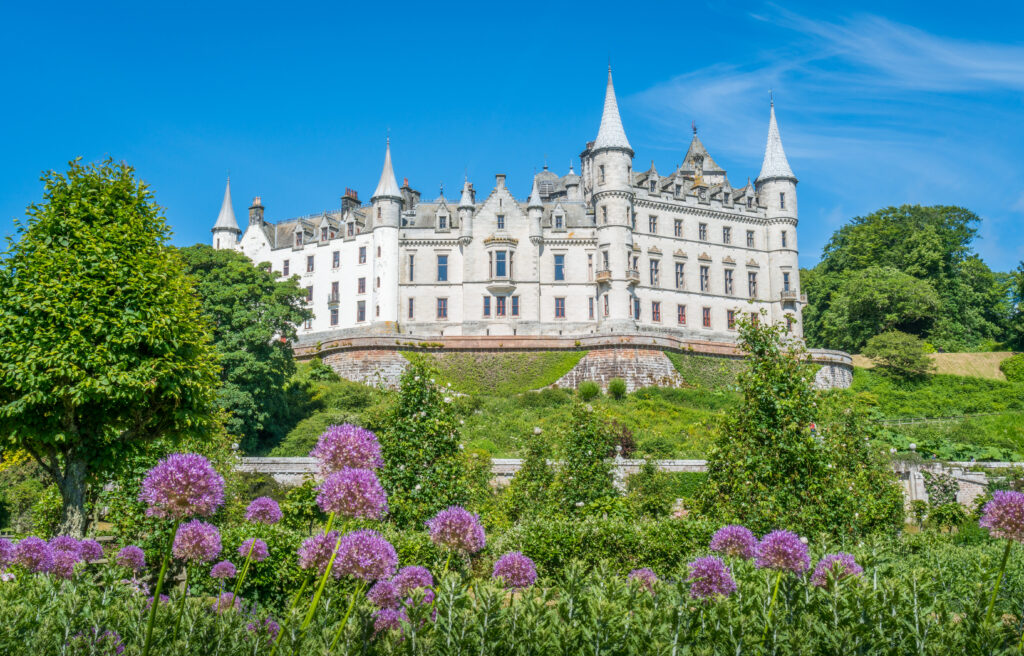
Dunrobin Castle rises above the Moray Firth like a fairytale castle. The exuberantly magnificent castle with six towers and 189 rooms has been the seat of the Earls and Dukes of Sutherland for more than 700 years. It is currently inhabited by Lord Strathnaver, who likes to refer to his clan’s ancestral castle as the “jewel in the crown of Scotland”.
The oldest part of the castle dates back to 1275 and is the northernmost, largest and longest inhabited “Great House” in Scotland. In times of war, Dunrobin Castle was a mighty fortress with walls several meters thick, as the Sutherlands were one of the most influential families in the country and were involved in numerous military conflicts. Fittingly, their clan motto is “Sans Peur – Without Fear”. In more peaceful times, the castle was converted into a palace, which today is more reminiscent of a French château.
Dunrobin is a real highlight because of its impressive gardens with views over the North Sea. The collection of art and antiques as well as a bizarre collection of hunting trophies also bear witness to the importance of the Sutherland clan.
Balmoral Castle
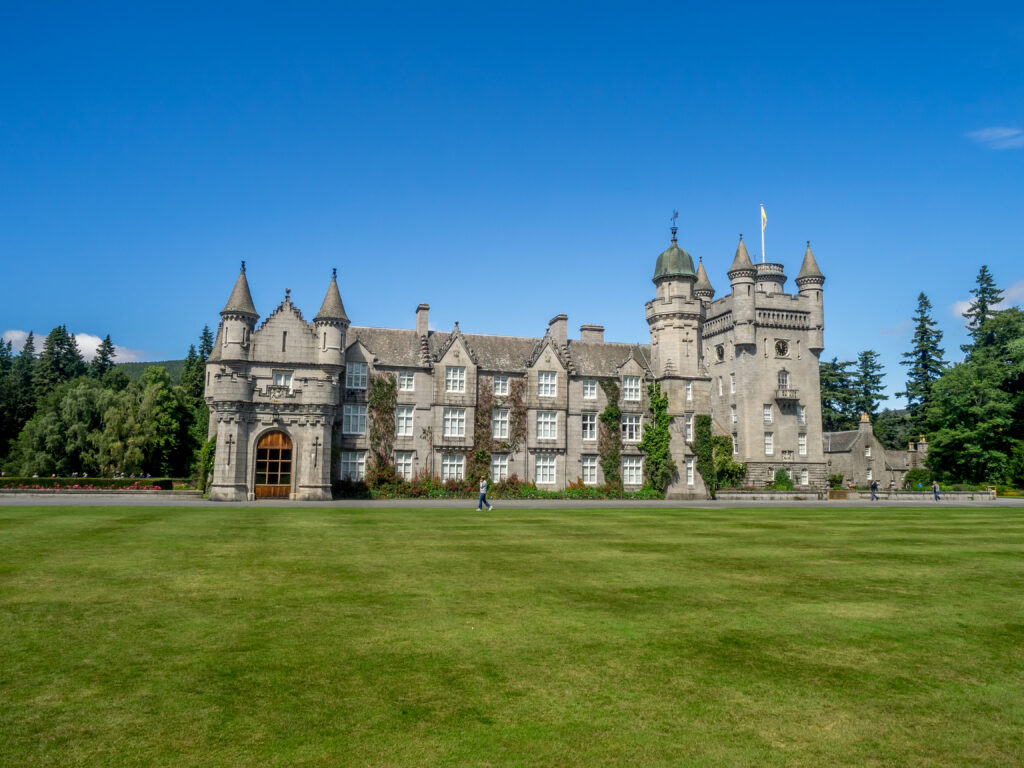
Queen Victoria was the first in a long line of British royals to choose the beautiful region of Royal Deeside as a vacation destination. She initially traveled to Balmoral Castle by carriage. It was she and her husband Albert who had the original, smaller castle replaced with the present, lavishly decorated Scottish Baronial-style castle in silvery-grey Aberdeen granite.
Attention Royal fans: There’s a new highlight in Scotland that needs to be on your to-do list. Balmoral Castle, where Queen Elizabeth spent her summers until her death, is opening its doors to visitors.
Previously, tourists could only marvel at the gardens of the estate and the ballroom, but now the general public can take guided tours to get an even better feel for how the royal family lives. This is because the areas that are now shown on the tours were previously only used by the British royals.
The catch is that tickets for the tours are limited per day and cost over 100 euros each.
Barren mountains surround Balmoral. To the west rises Ben Macdui, 1309 meters high, to the north Ben Avon, 1171 meters, to the south Balmoral’s local mountain, the imposing Lochnagar, 1155 meters, whose summit is often snow-covered even in summer. Loch Muick lies at its foot.
The Royal Lochnagar Distillery is also located very close to the Balmoral Estate, directly on the banks of the River Dee. Here, one of Scotland’s most exclusive whiskies is distilled according to centuries-old tradition and craftsmanship. The distillery was founded in 1845 by John Begg under the name Lochnagar.
When Queen Victoria bought Balmoral Castle three years later and paid a visit to the distillery with Prince Albert in the same year, it became a purveyor to the court and was henceforth allowed to use the addition Royal. Rumor has it that Queen Victoria always added a dash of Royal Lochnagar to her red wine.
Loch Ness
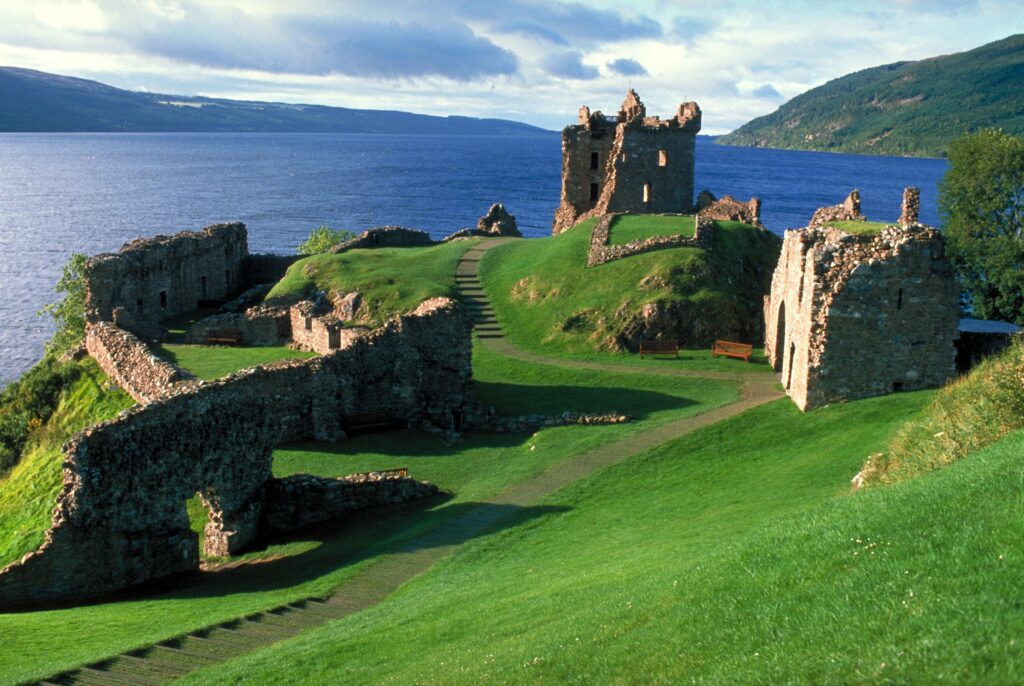
Loch Ness is one of the sights of Scotland that no tour of the far north should be without. Yet the loch itself is not even particularly impressive – at least not above the surface. There are undoubtedly many lakes in the Highlands that far surpass it in beauty and romance. But the name of this loch will forever be associated with what is probably Scotland’s greatest legend: the Loch Ness Monster.
Every year, countless tourists come to the shores of Loch Ness in search of the mysterious creature that is said to live in the depths of the lake. Doubters are quickly told that Loch Ness is the second largest lake in Scotland – after Loch Lomond – and holds the largest volume of water of all Scottish lakes. It is said that it can hold 7 times the earth’s population – a picture that impressively illustrates how deep this loch is and how many ways a prehistoric creature could hide in it.
For those who don’t just want to deal with the monster and recognize its back in every wave, the lake, which lies about 10 kilometers southwest of Inverness, is simply a beautiful example of a mountain lake created by glaciers. The hills that rise up on all sides are neither particularly high nor barren. The wooded slopes on its shores are rather unusual for Scotland’s Highlands and take some of the drama out of the lake itself.
Dundee
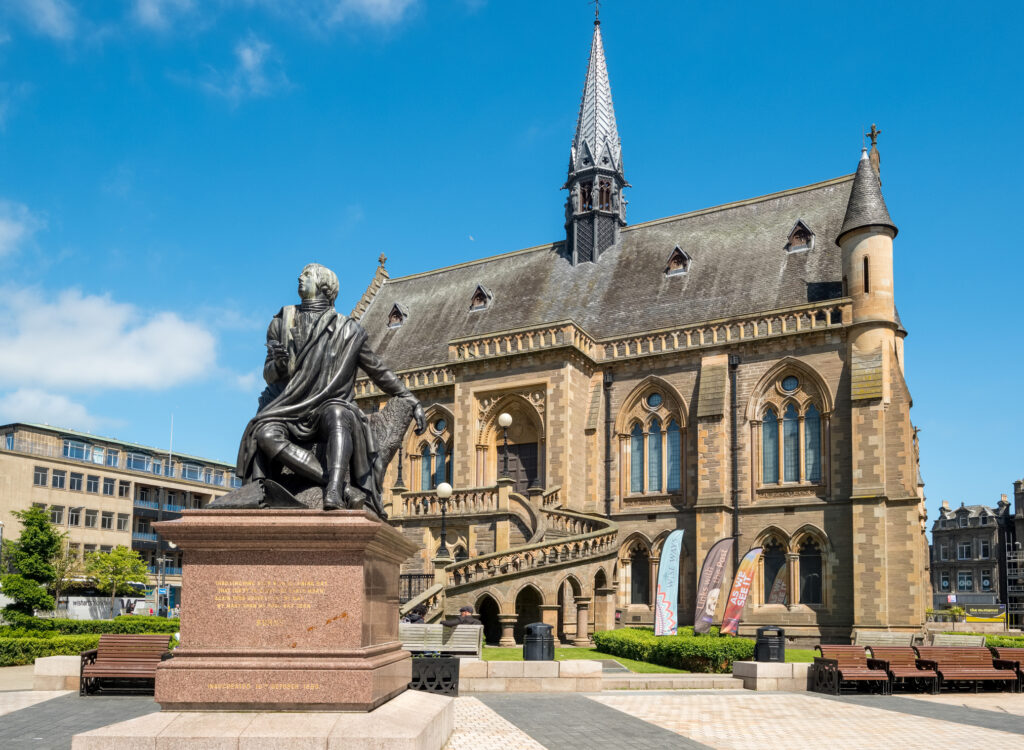
Dundee is breathing new life. The new design museum is giving the city’s former docks a new look, art students are transforming Dundee into a center of creativity and the restaurants are outdoing each other with interesting menus. So it’s high time to plan a visit, after all, even the travel guide Lonelyplanet ranked Dundee sixth in its “Best in Europe 2018” list.
Dundee in the east of Scotland is also located at the interface between the Fife and Angus regions. It is therefore also suitable as a base for excursions to these regions or can be included in a tour along their coasts.
The city has around 150,000 inhabitants – one in seven of whom are students, meaning that Dundee’s average age is well below that of Scotland.
Dundee is a young city with a corresponding scene and a creative fashion consciousness.
Dundee used to be the city of the three “Js”: Jute, Jam, Journalism. The jute weaving mills, which mainly produced sacks, were the economic engine in the 18th and 19th centuries.Jam was first produced commercially in Dundee around 1760 by the Keiller family (but not invented, as is sometimes claimed). And journalism is still held in high esteem in Dundee today.
For years, the city has been a hub for students wanting to learn game design and production. Games such as Lemmings and Grand Theft Auto were invented in Dundee. Design is the big theme in the city anyway and, last but not least, the V&A Dundee museum sends a clear signal as to where the city is heading: into the future, but with style and design.
Edinburgh
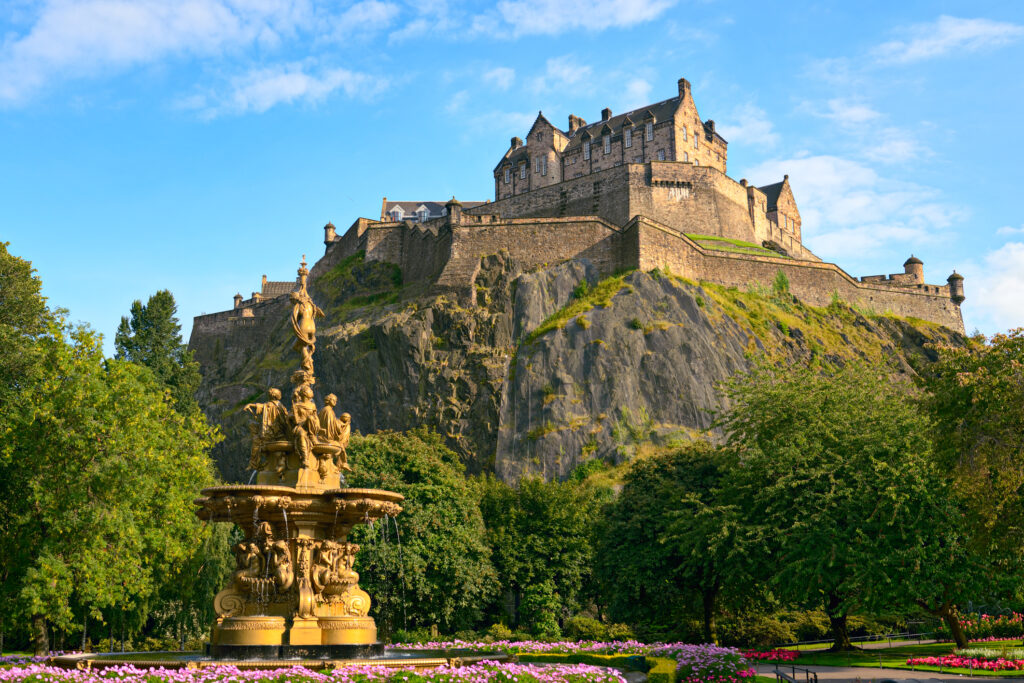
The Scottish capital is considered one of the most beautiful cities in the whole of Europe, as Edinburgh’s historical significance cannot be overlooked. Venerable churches, mighty palaces and neoclassical buildings dominate the city center. Edinburgh owes its reputation not only to its breathtaking architecture, but also to its exceptional location.
Along the east coast of Scotland, Edinburgh stretches over numerous hills, above which the city’s landmark, Edinburgh Castle, rises on the Rock Castle. The Scone Stone is located in the grounds of the castle. This played an important role in earlier British royal ceremonies.
The rulers of Scotland sat on it during the ritual. Many historic buildings provide an insight into earlier times, such as the 17th century residence “Gladstone’s Land”, the magnificent “Moray House”, but also the old town hall “Canongate Tolbooth” with its magnificent bell tower. St. Giles Cathedral was the scene of fierce clashes between Protestants and Catholics until it became the seat of the High Church of Edinburgh.
But Edinburgh’s New Town also has many interesting buildings to offer, such as Georgian House, which was built and furnished in the style of the 18th century. Parks break up the cityscape on both the southern and northern edges of the New Town.

